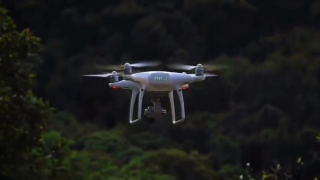By Yu Hailong
On March 26, the Japanese government convened a cabinet meeting and decided to lift the ban on exporting the next-generation fighter jointly developed by Japan, the UK, and Italy to third countries. It also revised the operational guidelines for the Three Principles on Transfer of Defense Equipment and Technology at the national security conference. Some commentators pointed out that this amendment effectively broke through the restrictions imposed on Japan for the last 70-plus years after the Second World War on exporting weapons capable of causing harm. Furthermore, it gave Japan easier access to the export of advanced military equipment, such as warships and submarines, directly to third countries in the future. Japan has significantly adjusted its security policy, progressively relaxed restrictions on arms exports, and sought breakthroughs in military development. It continuously bypasses the pacifist Constitution and reinterprets the defense principle, raising serious concerns among neighboring countries and the international community.
Over the years, the Japanese government has gradually revised its arms export system to break through the "no-go zone" of arms export. In 2014, the Japanese government adopted the Three Principles on Transfer of Defense Equipment and Technology, which significantly relaxed restrictions on the export of weapons and related technologies. In 2017, the Diet of Japan amended the Self-Defense Forces Act to allow the transfer of second-hand equipment from the Self-Defense Forces to other countries free of charge or at a reduced cost. In December 2023, the Japanese government made significant revisions to the Three Principles on Transfer of Defense Equipment and Technology and its implementation guidelines, allowing the export of essential parts such as engines or wings of fighter aircraft to countries with security cooperation relations with Japan, excluding finished fighter aircraft. This time, Japan's public announcement of selling new fighters to countries other than the co-developers indicates a further expansion of its arms export regime.
Japan has spared no effort to lift the ban on arms exports, and there are multiple considerations behind it. On the one hand, given the difficulty and high cost of developing warplanes, relaxing export controls will help spread out R&D and procurement costs and unleash the potential for production cooperation among the three countries' military-industrial enterprises. On the other hand, Japan's move is also the latest in accelerating military liberalization and realizing the so-called "national normalization". Japan's export of weapons is limited to the next-generation fighters, but it does not rule out that in the future. Japan will allow the export of more types of finished combat weapons. By then, Japan's military field will become increasingly outward-looking and aggressive.
Due to the uniqueness of Japan-US relations, the voices of the US are usually taken into consideration when Japan adjusts its arms export policy. Although the US previously declined to transfer core technologies during Japan's development and modification of fighters such as F-2 and F-15, and even interfered with Japan's independent R&D of the F-X fighter project by demanding lower technical standards, the US has been vigorously promoting the enhancement and transformation of the US-Japan Alliance in recent years and gradually loosening restrictions on Japan's arms exports for the strategic purpose of great power competition. The export targets for the next-generation fighters include countries such as India and the Philippines in the Indo-Pacific region, which also reflects Japan's intention to cooperate with the US in forming an "Indo-Pacific encirclement".
It should also be noted that although Japan has promised that it would only export weapons to countries with which it has signed defense equipment export agreements, and not to countries in a state of war, it is difficult for Japan to prevent the flow of such equipment to other countries, especially those involved in armed conflicts.
Considering Japan's history of militaristic aggression, Asian neighbors and the international community have closely monitored Japan's military security trends and remained highly vigilant about its commitment to exclusively defense-oriented policy and peaceful development. The Government of Japan should sincerely respect the security concerns of its neighboring countries, earnestly reflect on its history of aggression, and adhere to the path of peaceful development to avoid further loss of trust from its Asian neighbors and the international community.
Author Affiliation: Institute for International Strategic Studies, Party School of the CPC Central Committee (National Academy of Governance)









